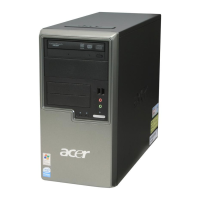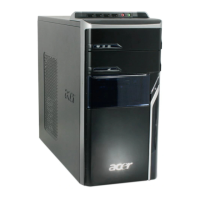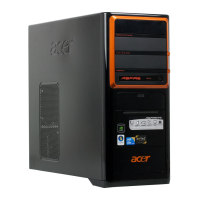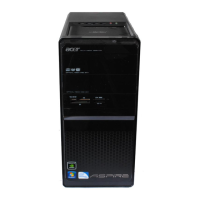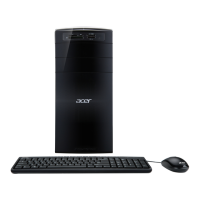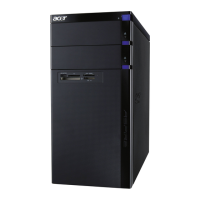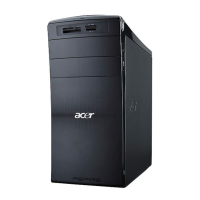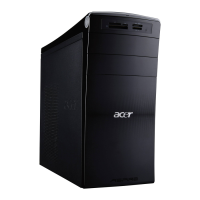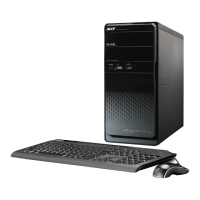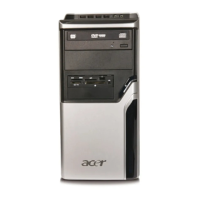Do you have a question about the Acer Aspire M1640 and is the answer not in the manual?
Details system features, including OS, Processor, Chipset, PCB, Memory, and PCI interfaces.
Lists detailed hardware specifications for processor, BIOS, and other components.
Guide on accessing the BIOS setup utility for system configuration.
Configuration options for basic system settings like date, time, and memory.
Configuration for chipset features like memory, CPU frequency, and spread spectrum.
Important preparation steps before disassembling the computer.
Instructions on how to remove the computer's side cover.
Procedure for safely removing the motherboard from the chassis.
Detailed steps for removing the Central Processing Unit (CPU).
Explains jumper settings and pinouts for motherboard connectors.
Lists parts that can be replaced in the field.
Visual representation of all components for easy identification.
| Tcase | 73.3 °C |
|---|---|
| Bus type | FSB |
| Stepping | M0 |
| Processor cache | 1 MB |
| Processor cores | 2 |
| System bus rate | - GT/s |
| Processor family | Intel® Itanium® |
| Processor series | Intel Pentium E2000 Series for Desktop |
| Processor socket | LGA 775 (Socket T) |
| Processor codename | Conroe |
| Processing Die size | 77 mm² |
| Processor frequency | 1.8 GHz |
| Processor cache type | L2 |
| Processor lithography | 65 nm |
| Processor manufacturer | Intel |
| Processor front side bus | 800 MHz |
| Processor operating modes | 64-bit |
| ECC supported by processor | No |
| Thermal Design Power (TDP) | 65 W |
| CPU multiplier (bus/core ratio) | 9 |
| Number of Processing Die Transistors | 105 M |
| Internal memory | 3 GB |
| Internal memory type | DDR2-SDRAM |
| Maximum internal memory | 4 GB |
| Discrete graphics card model | AMD Radeon HD 3450 |
| Maximum graphics card memory | 1.526 GB |
| HDD speed | 7200 RPM |
| Total storage capacity | 500 GB |
| Operating system installed | Windows Vista Home Premium |
| Microphone in | Yes |
| USB 2.0 ports quantity | 7 |
| Firewire (IEEE 1394) ports | 1 |
| Networking features | Gigabit Ethernet |
| Audio system | High Definition Audio 7.1 |
| Product type | PC |
| Chassis type | Tower |
| Processor code | SLA8Z |
| Processor ARK ID | 29739 |
| Processor package size | 37.5 x 37.5 mm |
| Depth | 441.5 mm |
|---|---|
| Width | 180 mm |
| Height | 359 mm |
